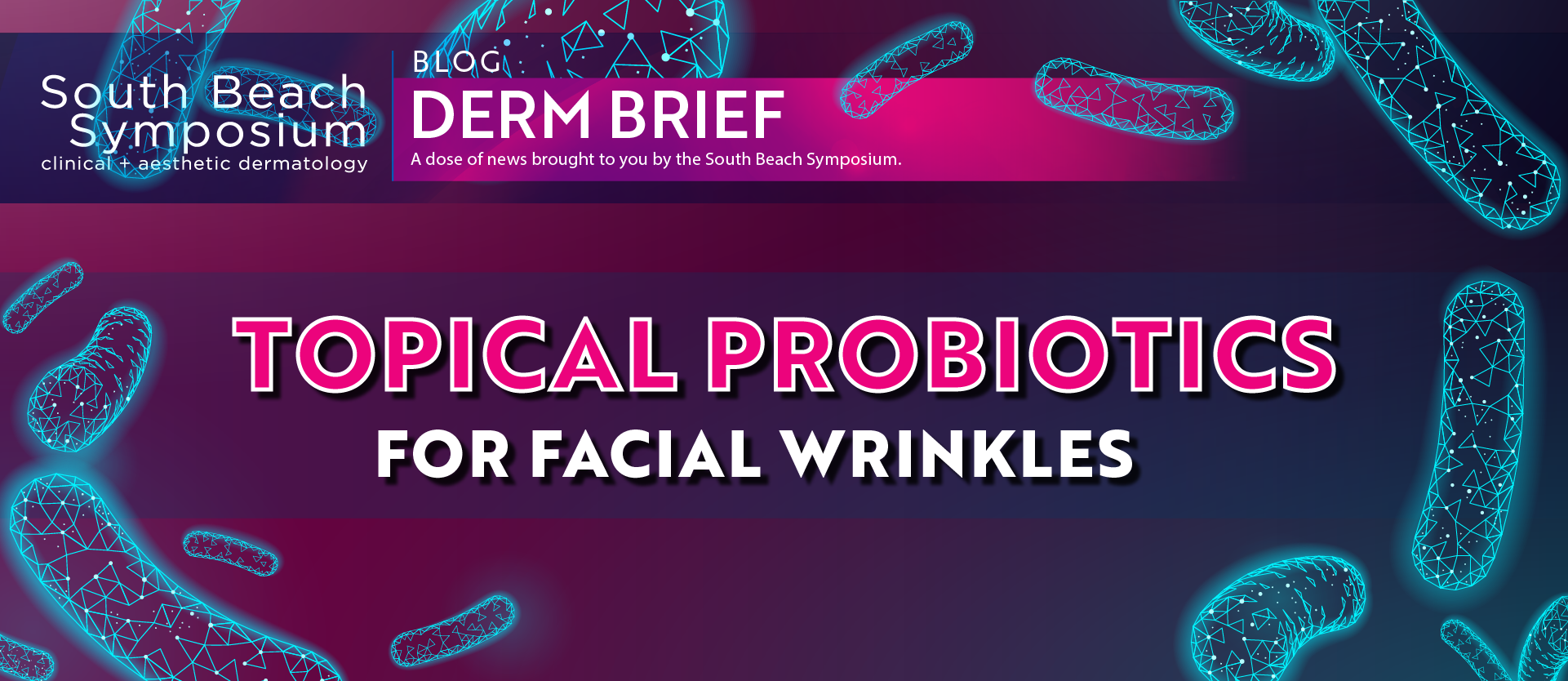Many uncontrollable factors such as environmental pollutants and biological aging contribute to skin wrinkle formation, radiance reduction, pigment changes, and other undesirable skin changes. While not all damaging elements such as excess sun exposure can be mitigated, there is an abundance of cosmetic solutions both available and under investigation for future use. Currently, topical and oral probiotics are widely used for a multitude of physical health benefits and there is a growing interest in their cosmetic potential.
As the use of prebiotics and probiotics slowly expands within dermatology, a developing body of research aims to evaluate their ability to treat a variety of skin conditions including acne, psoriasis, and atopic dermatitis. Several studies have suggested topical probiotics can promote skin appearance by improving hydration, decrease facial wrinkle depth, and improve skin elasticity due to their anti-inflammatory and anti-microbial properties.
To date, most studies have focused on the physical health outcomes of probiotic use and there is a limited amount of research concerning the aesthetic benefits of topical probiotics on skin health and appearance. Although, as their cosmetic potential gains interest, forthcoming studies such as the 2019 prospective study from the University of California Davis Department of Dermatology aim to evaluate the effect of probiotics on various dermatologic conditions. In the recent trial, researchers investigated the effects of Nitrosomonas Eutropha on facial skin wrinkles, radiance, and pigment intensity.
Nitrosomonas Eutropha
Nitrosomonas eutropha is a non-pathogenic, ammonia-oxidizing bacteria (AOB) presumed to have many health benefits including anti-inflammatory and anti-microbial properties. Utilizing sweat-produced ammonia, the bacteria generates nitrite and nitric oxide; both compounds have been associated with beneficial physiological effects, such as vasodilation, anti-inflammatory properties, improved wound healing, and reduced blood pressure. Pre-clinical trials have shown promising results in the reduction of pathogenic bacteria and improvement of skin health associated withNitrosomonas eutropha use.
Use of Topical Probiotic for Cosmetic Improvement of Facial Wrinkles
To assess whether there is any improvement in facial wrinkle depth and severity with the use of a topical Nitrosomonas eutropha probiotic mist, researchers analyzed a small cohort of 29 participants. The cohort was divided into two groups – one receiving a low concentration topical probiotic treatment, and the other receiving a high concentration mist. A total of 10 participants aged between 23 and 41 were given the low concentration product, while 19 participants between the ages of 19 and 61 were treated with the high concentration topical.
High-resolution photographs were obtained for each individual at baseline and after trial completion. Participants were instructed to apply the topical probiotic twice daily for a total of 7 days. After which, facial wrinkle depth and severity, skin pigmentation, and radiance were quantified through computer algorithm-based modeling, which has been clinically validated for all of the measures.
Upon completion of the study, researchers discovered a significant difference in wrinkle depth and severity in the high concentration probiotic group, as well as statistically significant improvement in pigmentation of the forehead and glabella. However, there was no overall change in pigment intensity for the overall face observed in either group. Wrinkle depth and severity did not change in the low concentration group and neither did pigmentation. Facial radiance was improved on the glabella and overall face in both groups, although the high concentration group experienced higher proportions of change and improvement in forehead radiance as well. However, the observed changes in radiance were subtle and may not be clinically significant.
This recent study implicates that probiotics may not only have a wide range of health benefits, but may also exhibit cosmetic potential. Researchers acknowledge several limitations of the trial, noting that further evidence is needed to accurately determine the effects of Nitrosomonas eutropha on skin aging symptoms, including studies with a larger sample size and longer follow-up period. Future research in the burgeoning dermatologic field of topical probiotics should aim to identify the mechanisms of action behind these cosmetic improvements, comprehensively evaluate potential indications, and to establish whether Nitrosomonas eutropha and other probiotic strains can provide lasting aesthetic benefits.
















